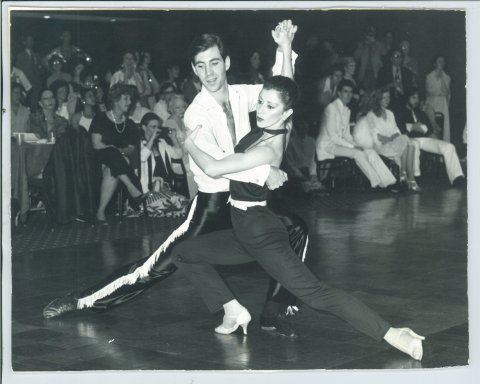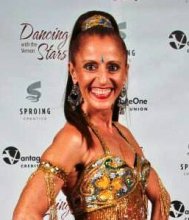You are here
Home ›Ballroom Dancing: Old, New, Borrowed & Hot Blooded

Dancing is as old as humanity itself dating back to Neolithic Origin from before 3000 B.C. Written records supplement many pictorial remains in civilizations of Egypt Greece and Rome. The Records speak of a class of professional dancers famous for their artistry, known as pygmy, who were originally imported from Equatorial Africa.
There is also considerable evidence that belly dance now performed by dancers of the Middle East is of African origin. Reports in Egypt described in detail the performance of a Rumba-like couple dance with an unquestionable erotic-like character. The Egyptians also knew acrobatic exhibition dances akin to the present day adagio dances, which feature slow moving aerial displays and spectacular body lifts.
The Egyptians were definitely aware of the sensual allure of the sparsely clad body in graceful movement, again paralleling today’s hot-blooded Latin atmosphere.
The two basic motives for dance are communication of emotion and physical release. Dance is a way of releasing such powerful feelings as joy and excitement or impatience and anger. Dance communicates the emotion of life & death and embodies the soul through expression of mood and spirit.

Dance can take a wide variety of forms, from a simple spontaneous activity to a formalized art. It may be the center of a social gathering where everyone participates or presented as a theatrical event with dancers performing before an audience.
Dance also fulfills a number of different functions including the religious, the military and the social. Modern military marches and drilling procedures are descendants of the tribal war and hunting dances that have been integral to many cultures such as European Folk dances.
Dance plays an important role in all culture, often depicting celebrations, courtship, recreation, entertainment, social strength and both political & personal identity.
Inherent in nearly all dance is the closely related form of everyday physical expression. Dance is the movement of the body in a rhythmic way usually to music and within a given space. The most important element of dance is the music. It is rare for dance of any kind, whether social, religious or theatrical to develop without musical accompaniment.
Rhythm is a vital component of all dance in all cultures. The drummer may play a different rhythm with each hand, one setting the basic pulse (beat) and the other producing a pattern of sound to reflect the mood or meaning of the dance (melody). The origin of Latin rhythm is a combination of music from African slaves and the European cultures of South America.
The bubbly & playful Samba is the national dance of Brazil with African origins. Afro-Brazilians perform this dance in the streets during Rio’s carnival. The Samba has a downward pulse action called the “Samba bounce”.
The Samba beat is based upon percussion beats with a background melody. Percussion involves the playing of music by striking instruments, such as the tambourine, symbols or drums.
The Rumba developed in the cane fields of Cuba and is known as the “walk of love” or the “dance of romance”. It was the first Latin American dance to interest the Americans in the 1950’s. Sultry and romantic, Rumba music is a mixture of African and Latin rhythms.
The fast and fiery Mambo was born in the nightclubs of Havana. The combination of jazz and Rumba rhythms gives Mambo its unique timing and tempo.
The Cha Cha Cha is Cuban in origin and an off-shoot of the Mambo. As some dancers found the music of Mambo to fast to keep up, they began to shuffle their feet and designed a new basic pattern of three steps and a shuffle. The Cha Cha Cha is the favorite among the Latin dances. Most of today’s popular music contains the Cha Cha rhythm. The girl represents a flirt that the man can never catch.
The influx of the Latin American culture into Canada is responsible for the notoriety of their music, food and dance style. Many radio stations, nightclubs and restaurants play the music of this passionate culture. I know I’m glad its finally arrived. Dancing to the soulful Latin rhythms will bring forth your basic instincts, as it has for many millennium.

Every Day's a Holly-Day!
TKH
- Log in to post comments